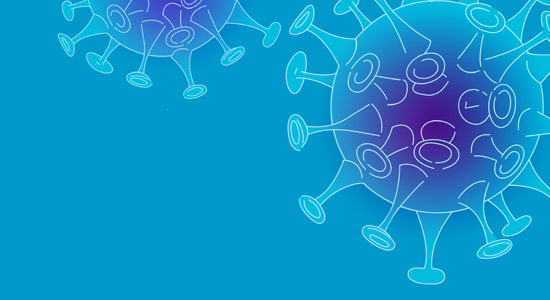
Violence against women tends to increase in any emergency, including epidemics. Stress, disruption of social and protective networks, increased economic hardship and decreased access to services can exacerbate the risk of women suffering violence.
The Eastern Mediterranean Region has the second highest prevalence of violence against women (37%) worldwide. This is due to structural systems that maintain gender inequalities at different levels of society, compounded by political crises and socioeconomic instability in the Region.
The Region also faces more humanitarian emergencies than any other part of the world, with a huge number of refugees and internally displaced populations.
In the case of COVID-19, isolation, restricted movement and stay-at-home measures to contain the spread of the infection have a particularly acute impact on women. The chances of women and their children being exposed to violence is dramatically increased, as family members spend more time in close contact and household stress intensifies, and the risk grows even greater when families also have to cope with potential economic or job losses.
Initial information from two countries in the Region report an increase of 50-60% of cases, based on survivors’ calls for help to women's organizations’ hotlines.
Health services that address issues such as clinical management of rape, first-line support and basic mental health services for survivors are overwhelmed by the urgent need to counteract the effect of the pandemic. This can have particularly dramatic outcomes in countries with limited health services and financial resources, as well as in humanitarian settings.
Special consideration should be given to more vulnerable groups, including women living with disabilities, who are at increased risk of domestic violence and may face further barriers in reaching the services they need, such as social assistance and home care, due to curfews and social distancing or restrictions on movement.
Displaced and refugee women, and women living in conflict-affected areas are also particularly vulnerable due to high population density, close proximity in living conditions; poor water, sanitation and hygiene; and limited health, social and protection services.
What can be done?
Health care facilities should update the referral pathways of services available locally to include information on psychosocial support and counselling services, protection services, hotlines and shelters.
Health care providers need to be aware of the risk of increased violence against women during this time, so that when survivors reach out to health care facilities (whether or not they have COVID-19, and whether or not they disclose the violence), they can receive appropriate and compassionate health care. Providers can help survivors by offering first-line support and relevant medical treatment.
Humanitarian response organizations need to include services for women subjected to violence and their children in their COVID-19 response plans and gather data on reported cases of violence against women.
Related links
COVID-19 and violence against women: What the health sector/system can do
COVID-19 and violence against women in the Eastern Mediterranean Region | Arabic
Q&As: Violence against women during COVID-19




